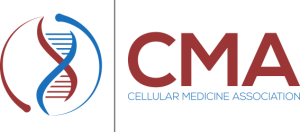Question 1
I’m in New Zealand and last year did an O-Shot training with Kirshni. We have just started using the Arthrex ACP PRP
The Arthrex rep told us that no anticoagulant, we didn’t need to add calcium chloride, just checking you agreed with this. I would prefer not to use it, if possible, as it removes an extra step, but also one less ‘foreign’ thing to be injecting the patient with. But obviously, we want the procedure to be as effective as possible.
Could you please advise?
Question 2
I was watching some __ videos, he’s the medical advisor for ___ (who we get exosomes and MSCs from), and he’s very much against the use of lidocaine with PRP and human cells and tissue products.
So do you use lidocaine or the similar when doing lichen treatments?
I’ve always used either topical or usually injected lidocaine without epi when I directly inject PRP/HCTP into the lichen plaques.
I can’t imagine how someone would tolerate my laser without numbing.
Now, I’ve seen stellar results, so the lidocaine didn’t stop the PRP and HCTPs from doing their jobs, just wonder if it would have been a better outcome without the numbing.
Your thoughts?
Answers
In summary
I usually do not activate the PRP for the Vampire Facial®, Vampire Facelift®, or for Hair. I do activate when offering the O-Shot® or P-Shot® (for more complete activation and less diffusion and quicker formation of platelet rich fibrin matrix to hold exactly where injected).
There is a biological basis for concern that lidocaine (and other local anesthetics) could reduce PRP efficacy — lidocaine has been shown in vitro to impair platelet activation and viability, as well as inhibit growth factor release, potentially diminishing the regenerative benefits of PRP.
However, clinical evidence is mixed: while some laboratory studies support the inhibitory effect, several clinical trials using PRP mixed with lidocaine have still shown significant patient improvement, suggesting any negative effect may be smaller in practice or offset by other factors.
• Lab data: Strong evidence that lidocaine impairs platelet function and reduces growth factor release in PRP.
• Clinical data: PRP mixed with lidocaine still shows significant improvements in many trials, suggesting the real-world impact may be less severe.
• Best practice trend: Many regenerative medicine protocols now avoid mixing lidocaine directly with PRP; instead, local anesthetic is injected separately before PRP to avoid direct platelet exposure.
References
Question 1– Should you activate?
Calciolari, Elena, Marina Dourou, Aliye Akcali, and Nikolaos Donos. “Differences between First‐ and Second‐generation Autologous Platelet Concentrates.”
Periodontology 2000, March 15, 2024, prd.12550.
https://doi.org/10.1111/prd.12550.
DeLong, Jeffrey M., Ryan P. Russell, and Augustus D. Mazzocca. “Platelet-Rich Plasma: The PAW Classification System.”
Arthroscopy: The Journal of Arthroscopic & Related Surgery 28, no. 7 (2012): 998–1009.
https://doi.org/10.1016/j.arthro.2012.04.148.
Fermín, Theodorakys Marín, Jacob G. Calcei, Franco Della Vedova, et al. “Review of Dohan Eherenfest et al. (2009) on ‘Classification of Platelet Concentrates: From Pure Platelet-Rich Plasma (p-Prp) to Leucocyte- and Platelet-Rich Fibrin (l-Prf).’”
Journal of ISAKOS, August 2023, S205977542300545X.
https://doi.org/10.1016/j.jisako.2023.07.010.
Hamilton, Bruce, Johannes L. Tol, Wade Knez, and Hakim Chalabi. “Exercise and the Platelet Activator Calcium Chloride Both Influence the Growth Factor Content of Platelet-Rich Plasma (PRP): Overlooked Biochemical Factors That Could Influence PRP Treatment.” Original Article.
British Journal of Sports Medicine 49, no. 14 (2015): 957–60.
https://doi.org/10.1136/bjsports-2012-091916.
Kao, David S., Stephanie W. Zhang, and Alexander R. Vap. “A Systematic Review on the Effect of Common Medications on Platelet Count and Function: Which Medications Should Be Stopped Before Getting a Platelet-Rich Plasma Injection?”
Orthopaedic Journal of Sports Medicine 10, no. 4 (2022): 232596712210888.
https://doi.org/10.1177/23259671221088820.
Magalon, J, A L Chateau, B Bertrand, et al. “DEPA Classification: A Proposal for Standardising PRP Use and a Retrospective Application of Available Devices.”
BMJ Open Sport & Exercise Medicine 2, no. 1 (2016): e000060.
https://doi.org/10.1136/bmjsem-2015-000060.
Okumo, Takayuki, Atsushi Sato, Kanako Izukashi, et al. “Multifactorial Comparative Analysis of Platelet-Rich Plasma and Serum Prepared Using a Commercially Available Centrifugation Kit.”
Cureus 15, no. 11 (2023).
https://doi.org/10.7759/cureus.48918.
PhD, Dr Naheed Ali, MD. “PRF vs PRP vs PRFM: The Difference and Which One Is Best.” Selphyl, August 3, 2023.
https://www.selphyl.com/post/prf-vs-prp-vs-prfm-what-s-the-difference-and-which-one-is-the-best.
Sheean, Andrew J., Adam W. Anz, and James P. Bradley. “Platelet-Rich Plasma: Fundamentals and Clinical Applications.”
Arthroscopy: The Journal of Arthroscopic & Related Surgery 37, no. 9 (2021): 2732–34.
https://doi.org/10.1016/j.arthro.2021.07.003.
Smith, Oliver J., Selim Talaat, Taj Tomouk, Gavin Jell, and Ash Mosahebi. “An Evaluation of the Effect of Activation Methods on the Release of Growth Factors from Platelet-Rich Plasma.”
Plastic and Reconstructive Surgery 149, no. 2 (2022): 404–11.
https://doi.org/10.1097/PRS.0000000000008772.
Smith, Stephanie A., Richard J. Travers, and James H. Morrissey. “How It All Starts: Initiation of the Clotting Cascade.”
Critical Reviews in Biochemistry and Molecular Biology 50, no. 4 (2015): 326–36.
https://doi.org/10.3109/10409238.2015.1050550.
Toyoda, Toshihisa, Kazushige Isobe, Tetsuhiro Tsujino, et al. “Direct Activation of Platelets by Addition of CaCl2 Leads Coagulation of Platelet-Rich Plasma.”
International Journal of Implant Dentistry 4 (August 2018): 23.
https://doi.org/10.1186/s40729-018-0134-6.
Ulasli, Alper Murat, Gokhan Tuna Ozturk, Bagdagul Cakir, Gulsemin Erturk Celik, and Fatih Bakir. “The Effect of the Anticoagulant on the Cellular Composition and Growth Factor Content of Platelet-Rich Plasma.”
Cell and Tissue Banking, ahead of print, August 28, 2021.
https://doi.org/10.1007/s10561-021-09952-6.
Question 2: Can you mix PRP with lidocaine?
Bausset, Olivier, Jeremy Magalon, Laurent Giraudo, et al. Impact of Local Anaesthetics and Needle Calibres Used for Painless PRP Injections on Platelet Functionality. n.d.
Correia, Cristina, Warren Grayson, Ryan Eton, et al. “Human Adipose-Derived Cells Can Serve as a Single-Cell Source for the in Vitro Cultivation of Vascularized Bone Grafts.”
Journal of Tissue Engineering and Regenerative Medicine 8, no. 8 (2014): 629–39.
https://doi.org/10.1002/term.1564.
Dregalla, Ryan C., Yvette Uribe, and Marko Bodor. “Effect of Local Anesthetics on Platelet Physiology and Function.”
Journal of Orthopaedic Research 39, no. 12 (2021): 2744–54.
https://doi.org/10.1002/jor.25019.
Lidocaine_and_PRP_Research_Summary. n.d.
“Positive Effect of an Autologous Platelet Concentrate in Lateral Epicondylitis in a Double-Blind Randomized Controlled Trial – Joost C. Peerbooms, Jordi Sluimer, Daniël J. Bruijn, Taco Gosens, 2010.” Accessed August 11, 2025.
https://journals.sagepub.com/doi/10.1177/0363546509355445.

